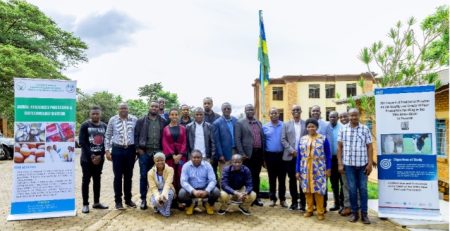Stakeholder Analysis at LASER PULSE
A key component of LASER PULSE’s Embedded Research Translation model is the collaboration of researchers and practitioners in development research projects. LASER PULSE defines Embedded Research Translation as an iterative codesign process among academics, practitioners and other stakeholders in which research is intentionally applied to a development challenge. Core to this approach to translation are four pillars: partnership, process, product, and dissemination (see image below). Additional information on the Embedded Research Translation model can be found on the LASER PULSE website. Involving stakeholders in all phases of a research project results in translated products that are custom designed for the development challenge and to the needs of the users of the product(s). By ensuring stakeholder involvement and buy‑in from the start of the project, the translated products are more likely to be adopted and applied by these key actors, enabling greater uptake and broader impact than researchers and the practitioners on the research team would be able to achieve on their own.
Who are stakeholders?
Stakeholders include community‑based organizations, nonprofits, government entities or private-sector enterprises that should be informed, consulted or engaged throughout the research project. They are not direct members of the project team, yet they have valuable insights to contribute to the project and have a major role in the wider application of the research findings and research translation product(s). A thorough stakeholder analysis will assist project teams to identify key influential stakeholders through stakeholder mapping, and to plan how to engage with stakeholders throughout the research project.
What is a stakeholder analysis?
LASER PULSE has developed two stakeholder analysis tools, a Stakeholder Map and a Stakeholder Engagement Plan, that provide the basis for how to identify key stakeholders in your project area and involve them meaningfully in the research project. These tools should be used at the beginning of the research project and updated throughout the research process. Download a template of the Stakeholder Map and Stakeholder Engagement Plan. Then edit it and fill it in with your team.
What are some best practices?
Project teams should carefully identify and consider the needs and perspectives of a wide range of stakeholders to ensure that the research translation products are applicable beyond the partners directly involved in the project, and to ensure that they ultimately lead to greater impact. Consider specifically targeting two to three key stakeholders throughout your project for more active involvement and toward tailoring final materials.
Project teams should use the guiding questions found in the Stakeholder Analysis document to guide discussions between research team members as you conduct the stakeholder analysis. These questions will assist in deciding who to include, where to find stakeholders, and when to engage them.








Leave a Reply
You must be logged in to post a comment.